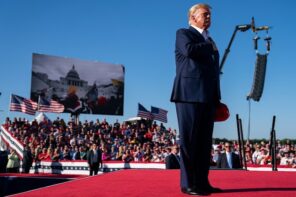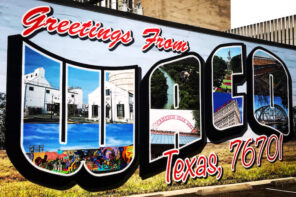The other day, I suggested that if we want to understand the future of the religious left, we ought to look to black and Hispanic communities. A new study from Indiana University’s School of Public and Environmental Affairs might provide some backup for that assertion. (Standard disclaimer: this is only one study, we’ll have to see if it’s corroborated by other research.)
Brad Fulton, the paper’s author, used data from the National Congregations Survey “not previously available to researchers” to track churches’ participation in service ministries and political action. His conclusions are intriguing: more churches are focusing on ministry, fewer on politics. Specifically and against the grain of the received narrative, conservative evangelicals are leading this shift:
Fulton found that the most substantial decrease in political participation has occurred among white evangelical churches. For example, between 1998 and 2012, the percentage of evangelical churches that distributed voter guides decreased from 19 percent to 11 percent, and the percentage promoting opportunities to participate politically decreased from 21 percent to 7 percent.
In a sense, this is a return to Evangelical roots; before the rise of Billy Graham in the 1950s, most Evangelical churches were studiously apolitical and focused on serving their local communities. These days, according to Fulton, liberal churches are more likely to take part in service ministries, but they’re also far more likely to have groups that discuss politics, distribute voter guides, lobby politicians, and take part in demonstrations. Generally, this has been the case for a while now, but the trend has accelerated quite a bit since 1998. It seems religious lefties have not been content to let the Religious Right have the last word in the political realm. (Notice that these activities are all non-partisan and mostly issue-driven. There isn’t really a religious left equivalent to something like CPAC.)
Because there are more conservative churches in the US than liberal ones, the overall trend has been away from political participation. But:
Also deviating from the general downward trend in political participation among most types of churches are Catholic and predominantly Hispanic churches, whose participation rates have been increasing. For example, between 1998 and 2012, the percentage of Catholic churches that lobbied an elected official increased from 12 percent to 24 percent, and the percentage of predominantly Hispanic churches that participated in a demonstration or march increased from 1 percent to 17 percent. Even though participation rates are increasing among these types of churches, they represent a small percentage of all churches.
Fulton explains that a lot of this increase is due to the debates over immigration reform; but even factoring that in, Hispanic churches are becoming more politically active. The number of congregations might be few, but they may also be larger communities, representing a substantial number of people.
In any case, the trend will only continue as Hispanics continue to grow as a part of the US population. Which brings us around at last to the joke in the headline: Can the religious left be effective again? Quizás, maybe. We’ll know in a few years.




